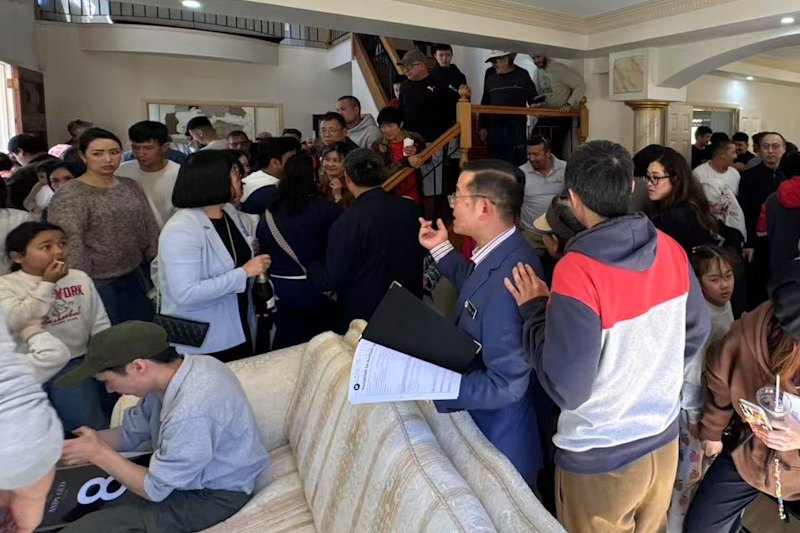Future House: 3-D printed and ready to fly

Homes you can print, transport on the back of a truck, even fly. Although they sound like the homes of science fiction, they might well be the real residences of the not-too-distant future.
Impelled by the pressures of climate change and population growth and shaped by the promise of technologies like 3-D printing, a revolution is brewing in the future of homebuilding around the globe – especially in cities.
As Earth’s inhabitants, we need to rethink almost everything about the way we live, especially in coastal cities, because our world may be reshaped by rising oceans in ways we can’t yet fully anticipate, according to Hans-Peter Plag, a professor and director of the Mitigation and Adaptation Research Institute at Old Dominion University in Norfolk, Virginia.
“We have built with the design principle that sea level is not going to change,” he said. “This time has come to an end. On the other hand, living in the coastal zone is extremely important for us. So we need to find a way to live in the coastal zone, but we cannot assume that sea level is stable.”
Complicating the problem of a shrinking landmass is the prediction that the human population will grow to almost 10 billion people by 2050. And while many cities in the world will have to cope with extraordinary growth, others will have to prepare for shifting migration patterns that could leave them virtually deserted.
“Look at what happens when cities shrink,” says Cindy Frewen, an architect, urban futurist and adjunct professor at the University of Houston Foresight Graduate Program. “It’s not pretty. Look at Detroit.” As a quarter of its population drained out of the city from 2000 to 2010, tens of thousands of buildings became hazards instead of homes.
Today, 1 in 8 people live in urban slums, and by 2025, “it is likely that 1.6 billion will require adequate, affordable housing,” according to the UN-Habitat’s World Cities Report 2016. The report calls for housing to be placed at the centre of the urban agenda for the future to address this enormous global challenge.
“Nobody has solved the issue,” Frewen said.
Behrokh Khoshnevis, professor of engineering at the University of Southern California and director of its Centre for Rapid Automated Fabrication Technologies (CRAFT), is one of many innovators looking to ease the housing crises of the future. “Somehow, we have to address the issue of shelter, which is at the base of the pyramid of needs,” Khoshnevis said.
He hopes his 3-D printing construction method, which he calls Contour Crafting, will create a way to build homes for a fraction of the current cost. While he can’t do anything about the price of land, Khoshnevis said his technology would build a house in a day and cut down on the construction cost by 30 per cent.
The method supplies a concrete mixture through a robotic gantry guided by a computer. Instead of a hand laying a line of bricks, the machine’s nozzle pours a shaped tube of concrete, following the entire outline of the house in one lap. The next go-round adds another layer, building until it is time for the roof to be added by a crane, then perhaps another story on top. For apartment buildings, Khoshnevis has plans for a machine that will climb the building as it builds it.
He aims to build a full house in one day without a human hand, a goal he says will happen within the next year or two. Although Khoshnevis started the 3-D printing construction movement in 1996, the Chinese company Winsun has already printed homes and apartments using a similar method, though creating the pieces off-site and assembling them at the location of the structure. Khoshnevis says U.S. building codes have created a longer timeline for 3-D-printed houses to ensure their safety.
For cities in the far future, Khoshnevis and NASA are working together to build structures using Contour Crafting on the moon from materials available there. If your great-great-great-grandchildren end up living on Mars, it might be one of these machines that builds their houses.
Khoshnevis has some high-powered fellow believers. Eric Schmidt, executive chairman of Alphabet, Google’s parent company, recently listed 3-D-printed construction on a list of the “next really interesting moon shots,” referring to ideas that will radically shape the future. “We can build them with 100 percent recyclable materials,” Schmidt said. “So it’s another good reason from an environmental perspective.”
Arthur Mamou-Mani, director of Mamou-Mani Architects and FabPub as well as a lecturer at the University of Westminster, said humans would be much more empowered to face challenges and respond with creative solutions as a result of the availability of 3-D printers and other fabrication machines.
His company is printing chairs for Food Ink, a restaurant that uses 3-D printing technology to prepare food. He says a huge shift is coming in which people will be able to customise, download and print items like clothing, ceiling tiles, cabinet hinges, cars and machine parts, either at home or at a nearby fabrication laboratory. Open-source sites like WikiHouse, Instructables and Thingiverse encourage the development of 3-D-printed and laser-cut projects and disseminate ready-made plans. As online digital files, the objects we buy will no longer be finished but in constant mutation, Mamou-Mani said.
These innovations will create much more originality in housing, Mamou-Mani said, because the selection of files will be so vast and the design can be changed between buildings with little effort, so the economies of mass production will no longer benefit repetition of design.
“It will empower people to participate in the designs they want instead of being relatively passive in the way they inhabit, choose a home or buy a product,” he said.
The kinds of files people will have access to will open up areas usually not thought of as part of home building. For example, while some people have talked about how drones could pick up and move houses in the future, Mamou-Mani said, “The house will be the drone. Why separate the thing that carries you from the house? Just make it the house.
“Our generation is increasingly nomad, raised with low-cost airlines and often working from home with laptops, therefore flying our homes will seem normal in the future, and as for any migrating bird, borders between countries will seem like an absurd relic of the past.”
Kasita, a company in Austin, Texas, is moving toward a model that would allow people to move a home between cities without wheels or propellers.
Imagine owning a micro-movable apartment that you parked in a building in Austin, where it slides in like a drawer. When you needed to move to Los Angeles, a crane would come, put your house on a truck that would drive it to your new location, where a forklift could slide it into an opening in your new building.
This is the idea behind a design created by Jeff Wilson, chief executive of Kasita, who became known as Professor Dumpster after living in a 33-square-foot Dumpster for a year as a way to test the limits of minimalism. Thinking of a way to help musicians, artists, young people and service workers being priced out of booming Austin, he came up with a 29-square-metre smart home that can stand alone or be inserted into a rack up to 10 stories tall. In the rack units, the houses will plug in to water, power and sewer lines. The company is hoping to produce its first 40 units this year.
“Short term, we’re thinking about our mission of providing an affordable urban solution. Long term, we’re just going to have to become more nimble in how we continue to live in our cities,” Wilson said. “If the sea levels rise, it’s certainly going to be a lot easier to move a Kasita than it will be to move a Hilton.”
We recommend
We thought you might like
States
Capital Cities
Capital Cities - Rentals
Popular Areas
Allhomes
More






